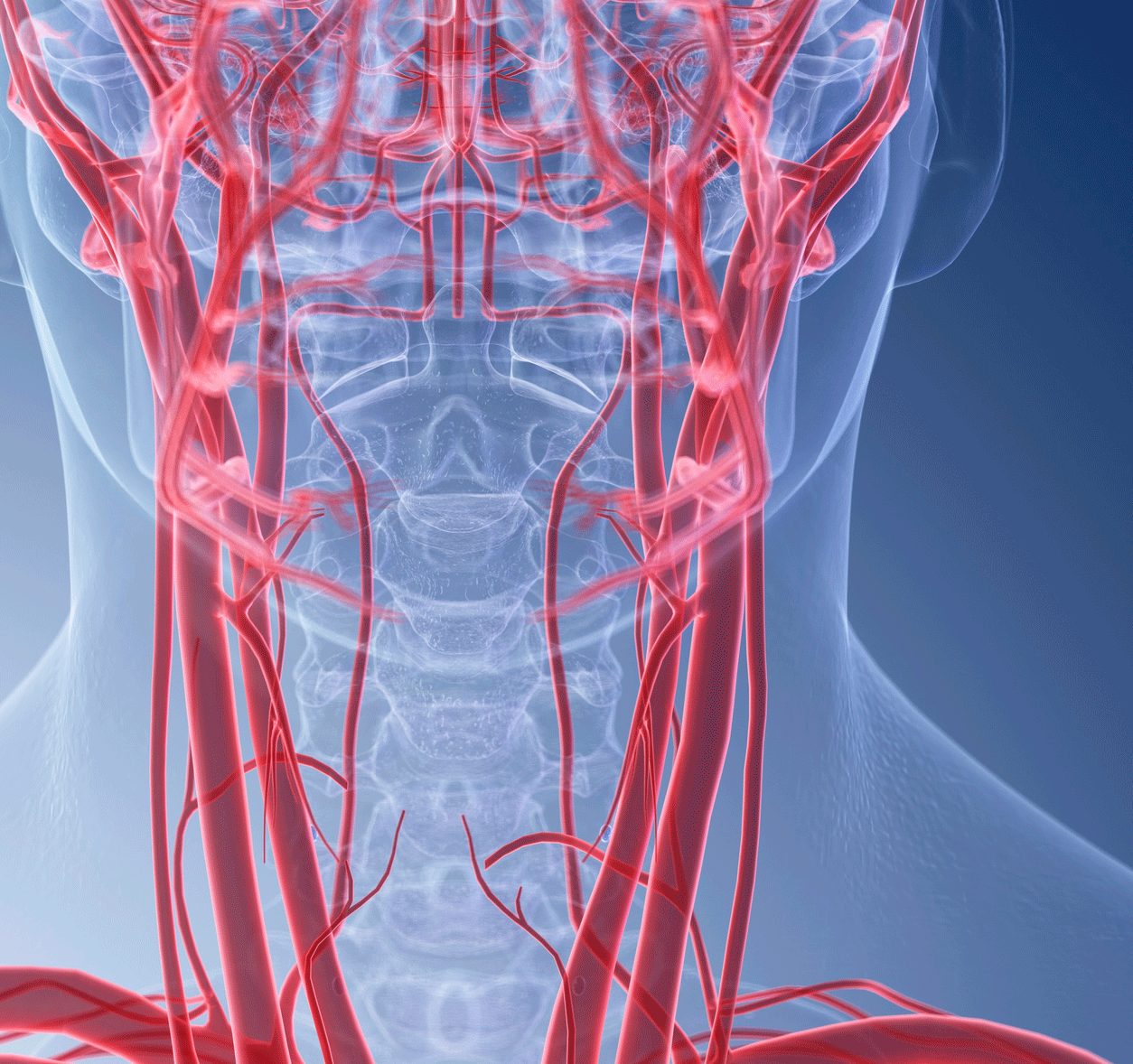What Is Carotid Artery Disease?

The carotid arteries on each side of your neck carry blood and oxygen to your brain. Carotid artery disease can cause blockages, raising your risk for stroke.
The buildup of cholesterol deposits in your arteries affects more than just your heart. The same process can clog arteries in your neck, resulting in carotid artery disease.
This condition, also called carotid artery stenosis, involves one or both of the large arteries on either side of your neck. Just as plaque (fatty cholesterol deposits) can narrow arteries carrying blood and oxygen to and from your heart, plaque can also clog one or both carotid arteries carrying oxygen-rich blood to your brain.
This build-up of plaque is called atherosclerosis, a condition strongly associated with heart disease, heart attacks, and strokes. But the National Heart, Lung and Blood Institute explains that atherosclerosis-caused carotid artery disease can also raise your risk of stroke, the fifth leading cause of death in the U.S., according to the American Stroke Association.
About five percent of American adults are estimated to have carotid artery disease. It doesn’t develop overnight: The arteries become narrowed from plaque over many years, especially in middle-age and beyond.
The good news is, if you recognize the risks, causes, and symptoms of carotid artery disease, you can take action to help protect your health.
YOU MIGHT ALSO LIKE: What Is Pulmonary Hypertension?
Risk factors for carotid artery disease
Some risk factors you can’t change increase your odds for carotid artery disease, including growing older, being male, your family history, and genetic factors.
On the other hand, lifestyle can contribute to the development of carotid artery disease.
You can reduce or control these factors:
- Work with your doctor to reduce high cholesterol and high blood pressure.
- Don’t smoke and don’t eat an unhealthy diet loaded with saturated fat.
- Commit to regular exercise and, if you have diabetes, make sure you are doing all you can to keep your blood glucose levels regulated.
- If you are overweight, get serious about reaching a healthy weight and staying there.
Symptoms of carotid artery disease
Unfortunately, a stroke can be the first sign you have carotid artery disease, according to the Cleveland Clinic. It can occur when a piece of plaque breaks off in the carotid artery and cuts off blood supply to part of your brain. A transient ischemic attack (TIA) — or “mini-stroke,” causing temporary stroke symptoms (such as difficulty speaking or a drooping face) — can be the first warning of a more serious stroke to come.
A TIA or stroke typically results in imaging tests, such as an ultrasound, a CT scan, or magnetic resonance angiography (MRA), to find places in your carotid arteries that may be narrowed or blocked. The tests also allow your doctor to classify any carotid artery disease as mild (less than 50 percent blockage), moderate (between 50 and 79 percent blockage), and severe (80 to 99 percent blockage).
Treatment for carotid artery disease
Surgery and the placement of stents may be appropriate for severe blockages causing TIAs or stroke, depending on the age of the patient. But the U.S. Preventive Services Task Force (USPSTF) recommendation statement on screening for asymptomatic carotid artery stenosis — that is, people who have not experienced strokes or TIAs — warns against testing or surgery otherwise.
The reason? Despite the increased risk of stroke, carotid artery disease “causes a relatively small proportion of strokes in the United States,” the USPSTF states. The report points out that screening people who have no stroke-related symptoms for carotid artery disease can yield false-positive results that are not clinically relevant and lead to invasive treatments that can sometimes do more harm than good.
“Additionally, there is evidence that treating asymptomatic patients with surgical or catheter-based procedures provides no-to-small benefit in reducing adverse health outcomes as compared to current medical therapy,” the report concludes.
Simply put, if you have high blood pressure, are overweight, have uncontrolled diabetes, or other risk factors for atherosclerosis — but no overt symptoms of TIAs or stroke history — work with your doctor to lower your risk for plaque in your arteries. You’ll be reducing your risk of stroke and heart attacks, too.
Updated:
February 06, 2023
Reviewed By:
Janet O'Dell, RN